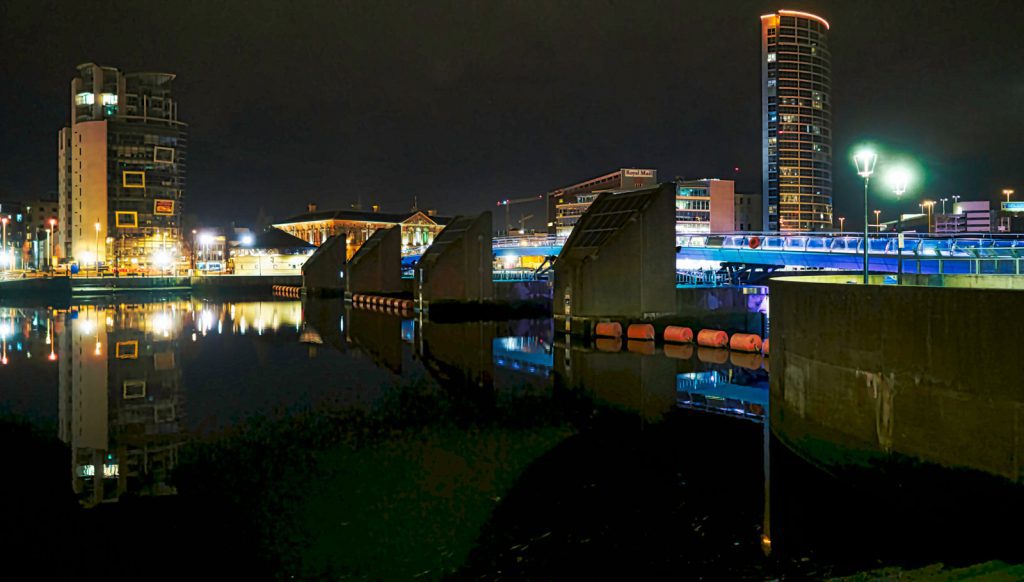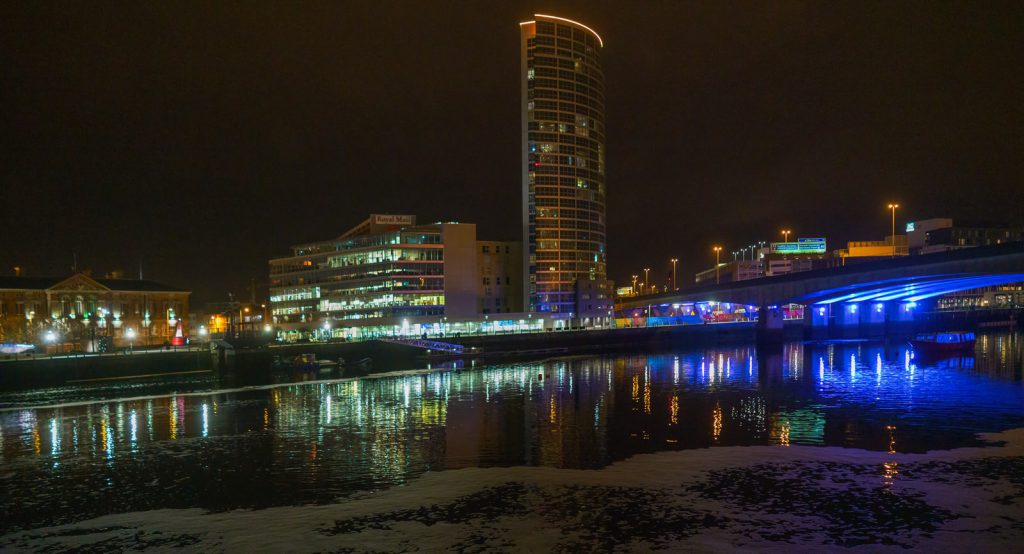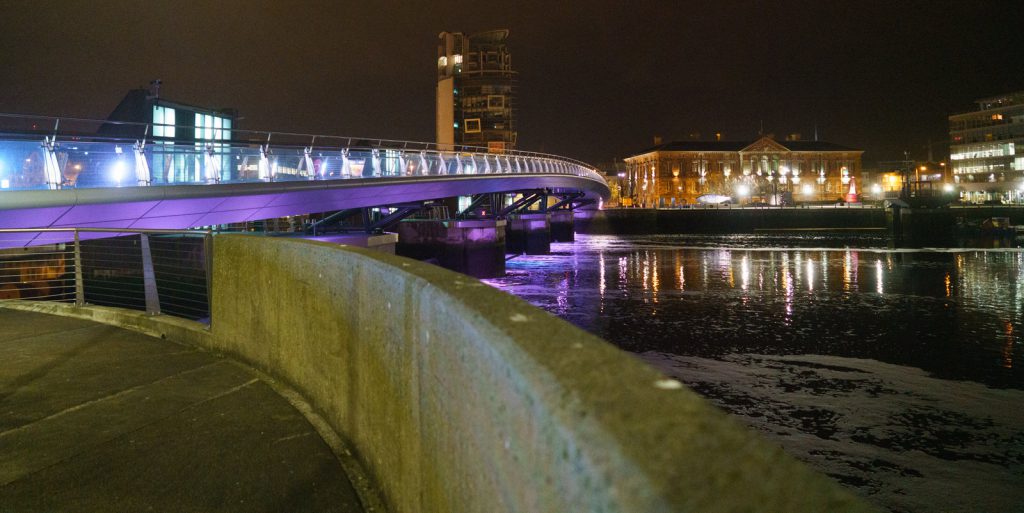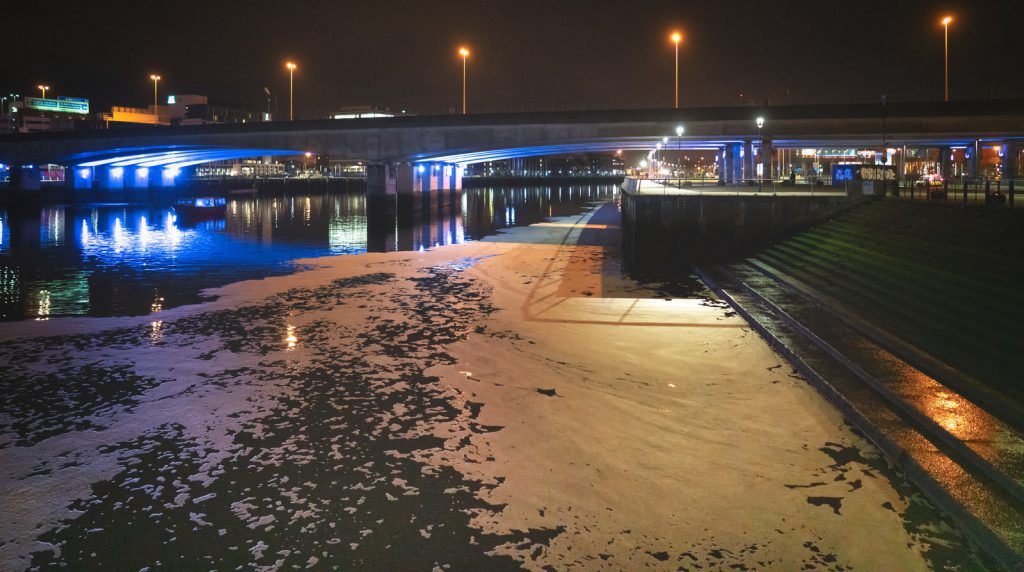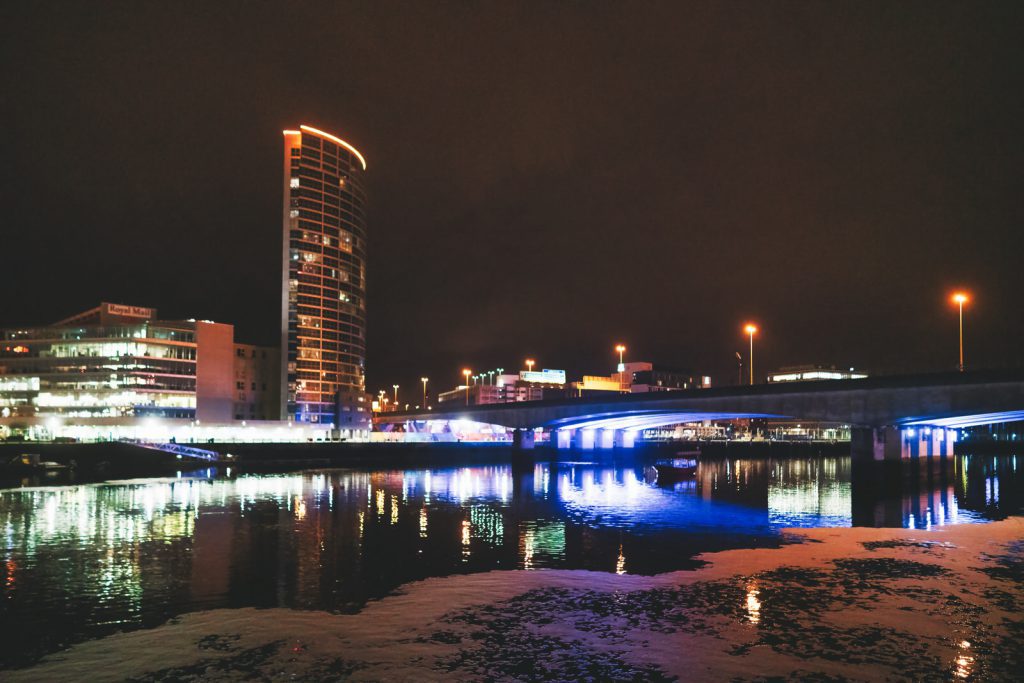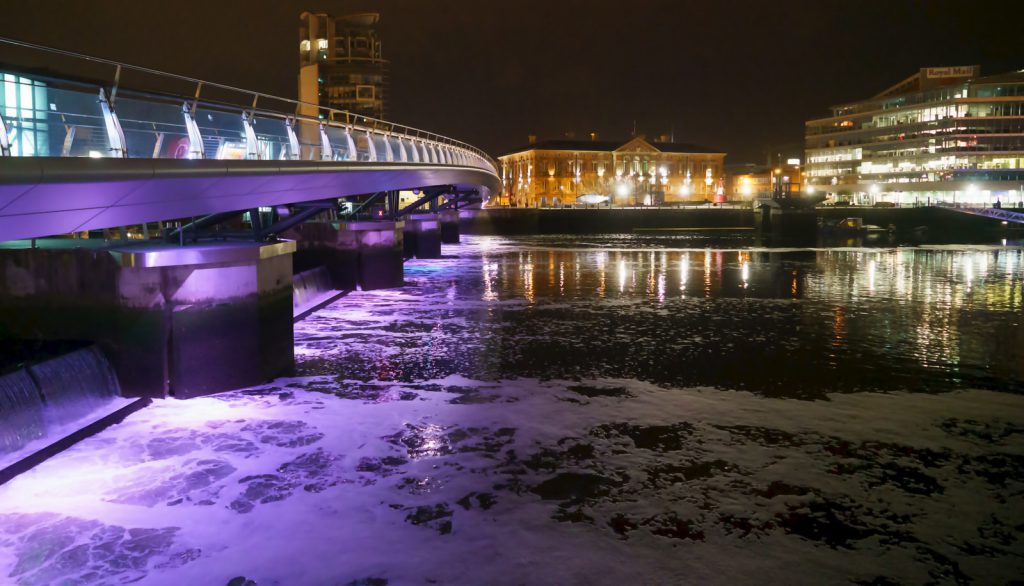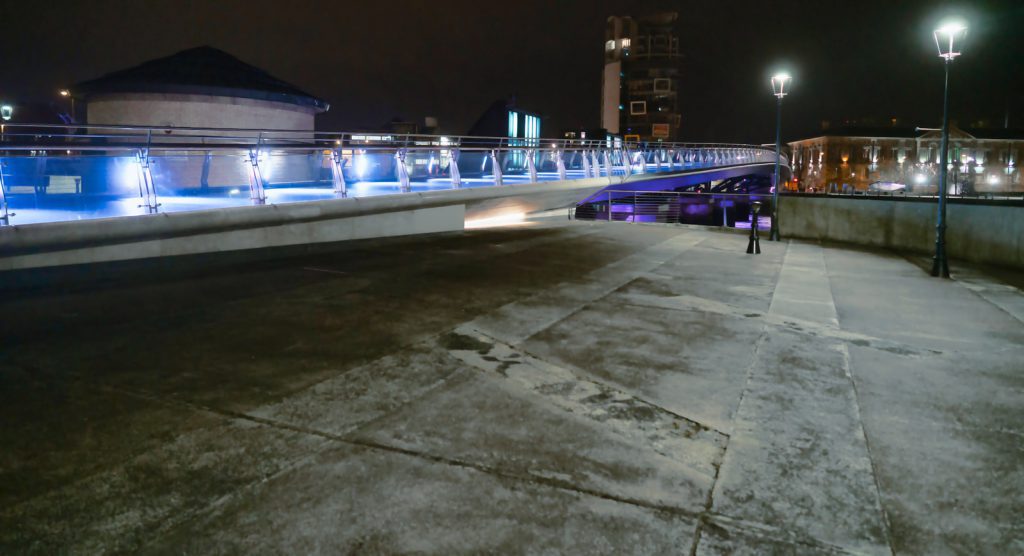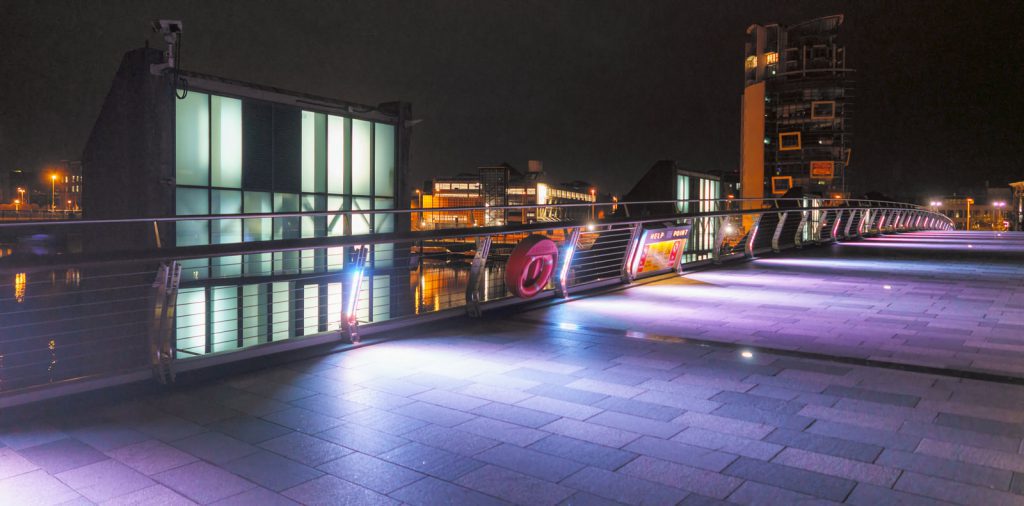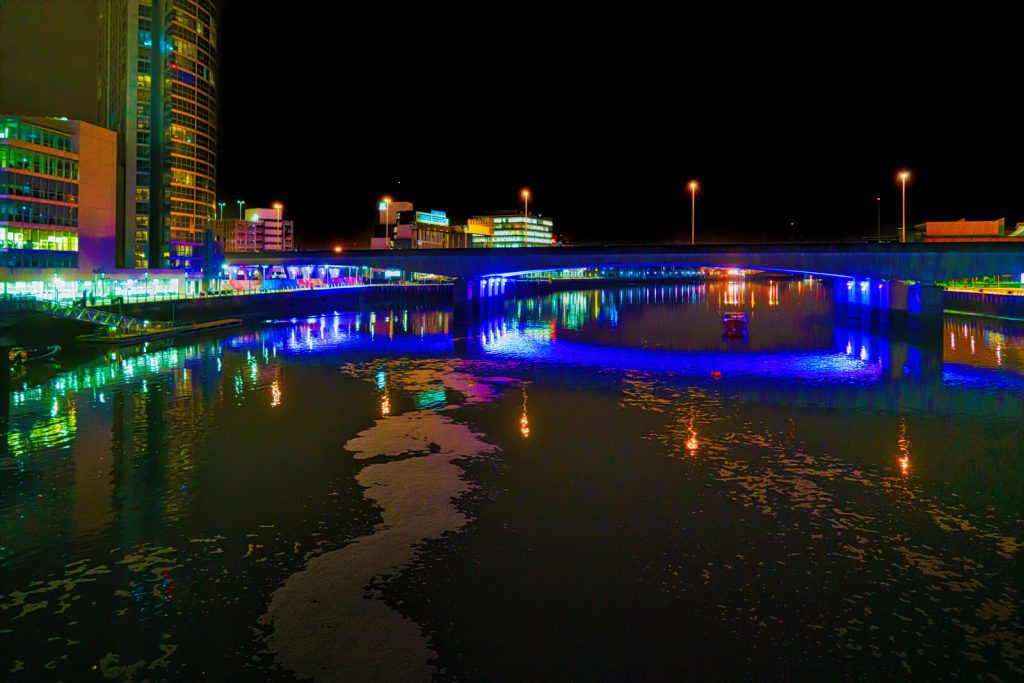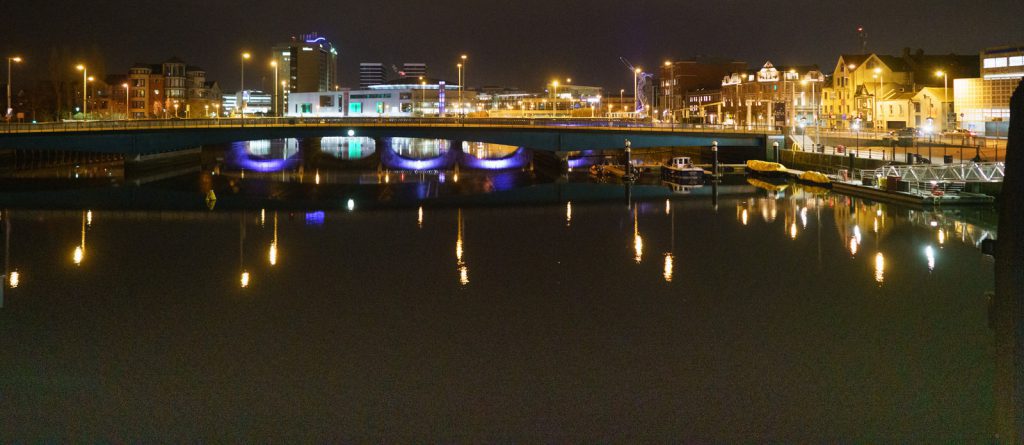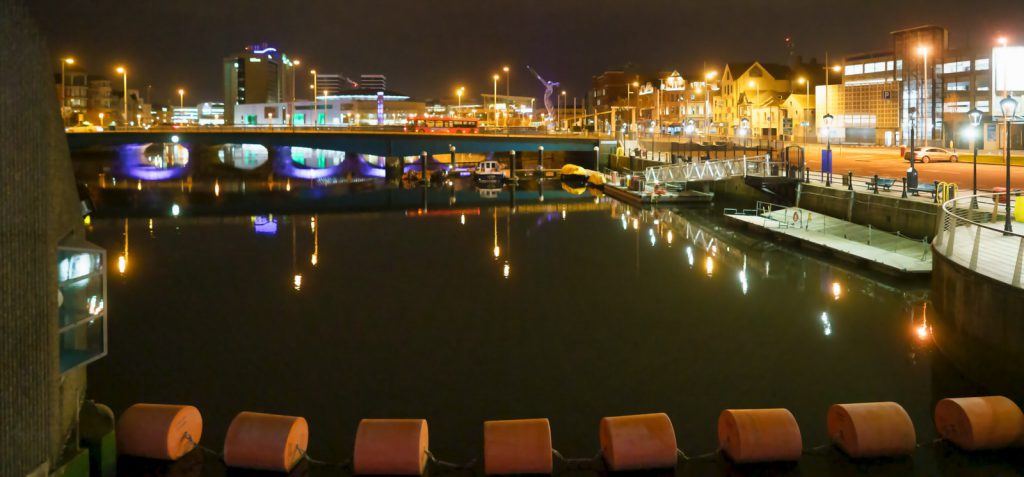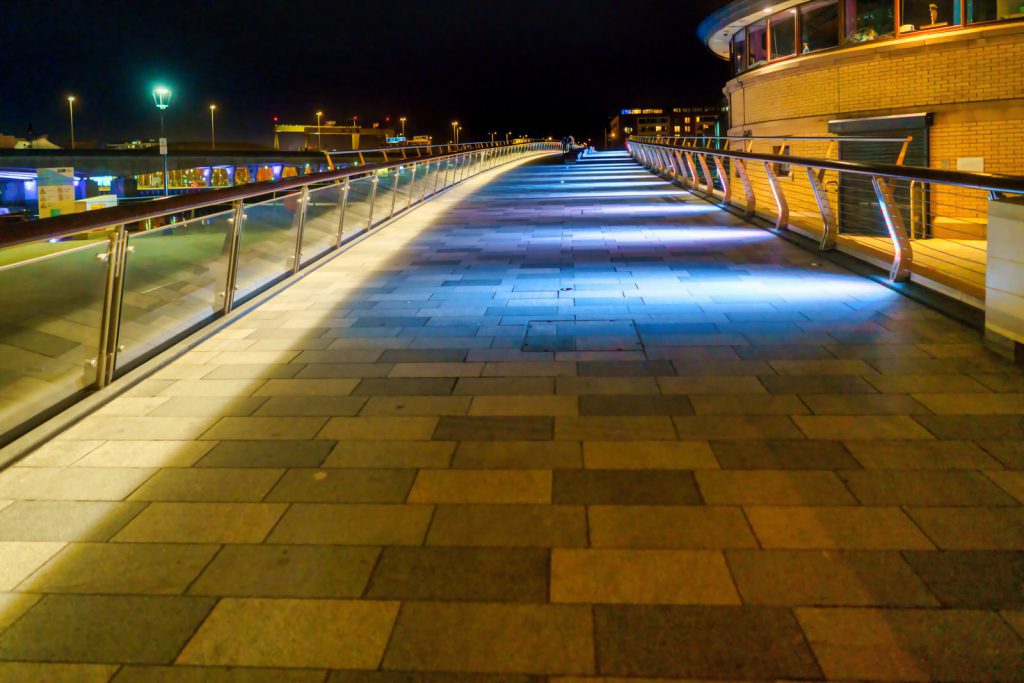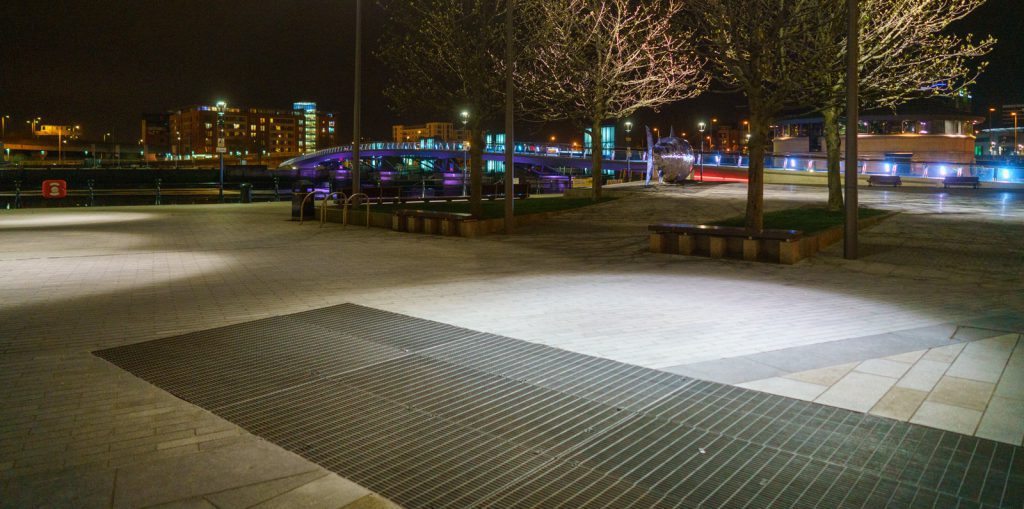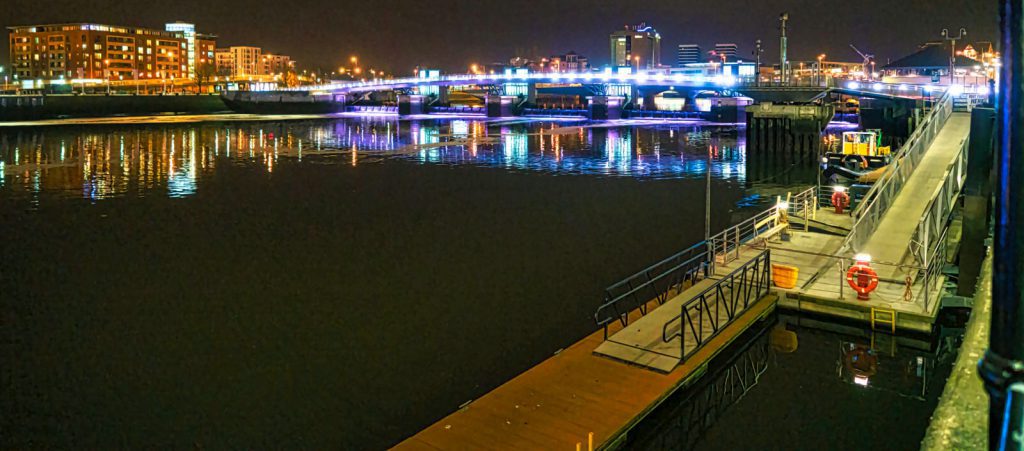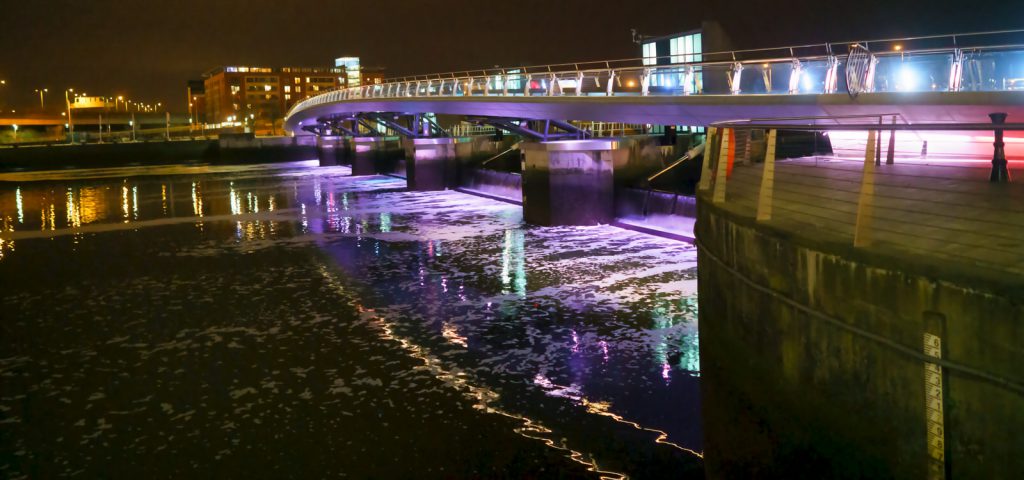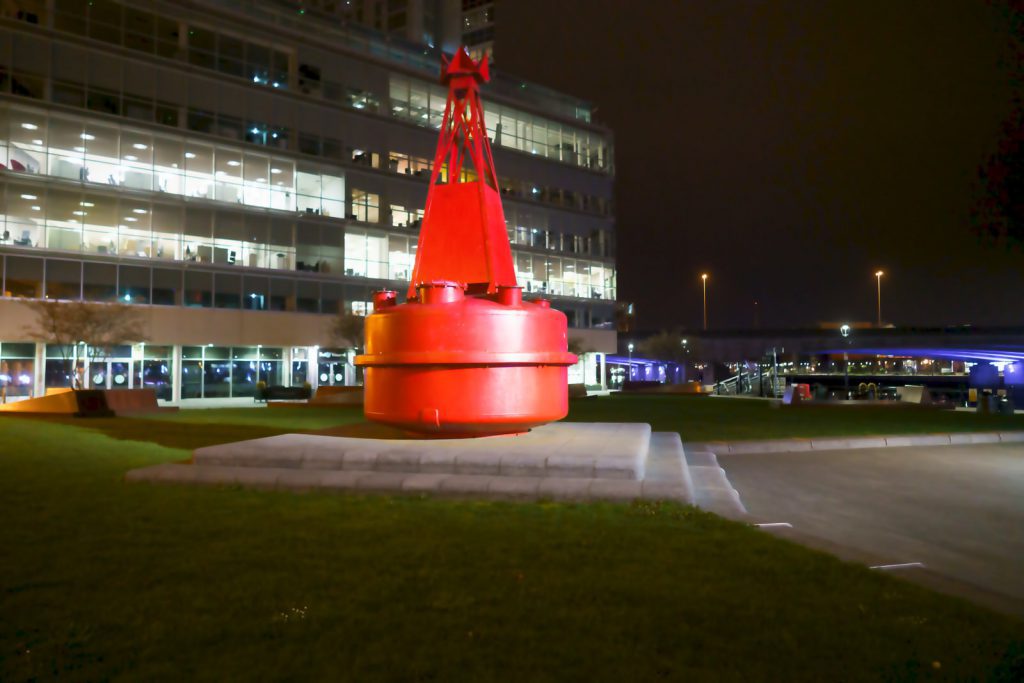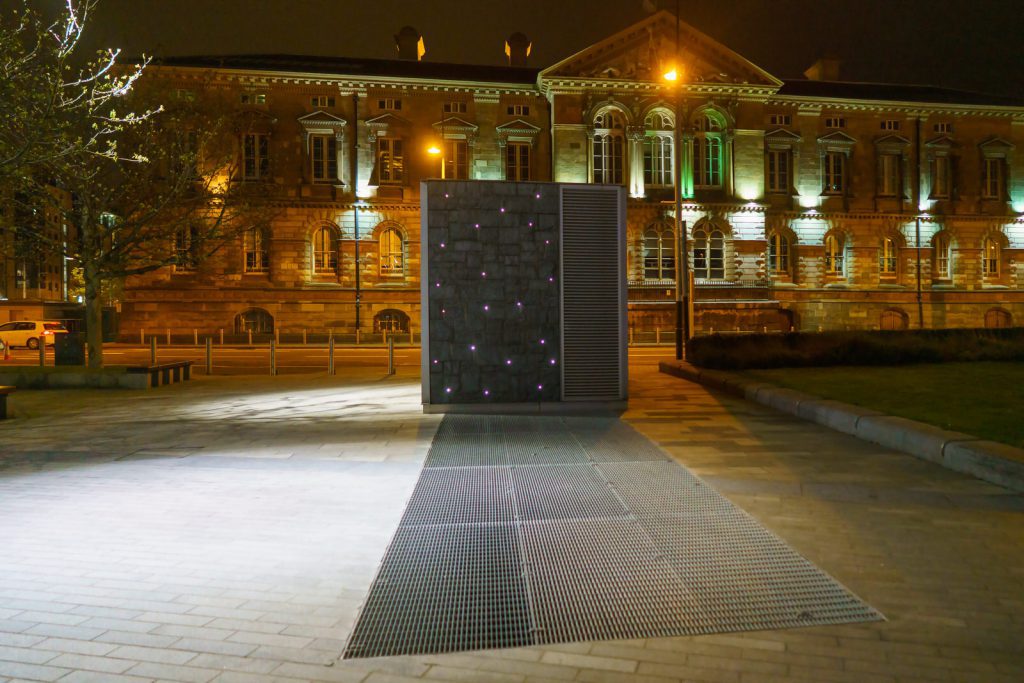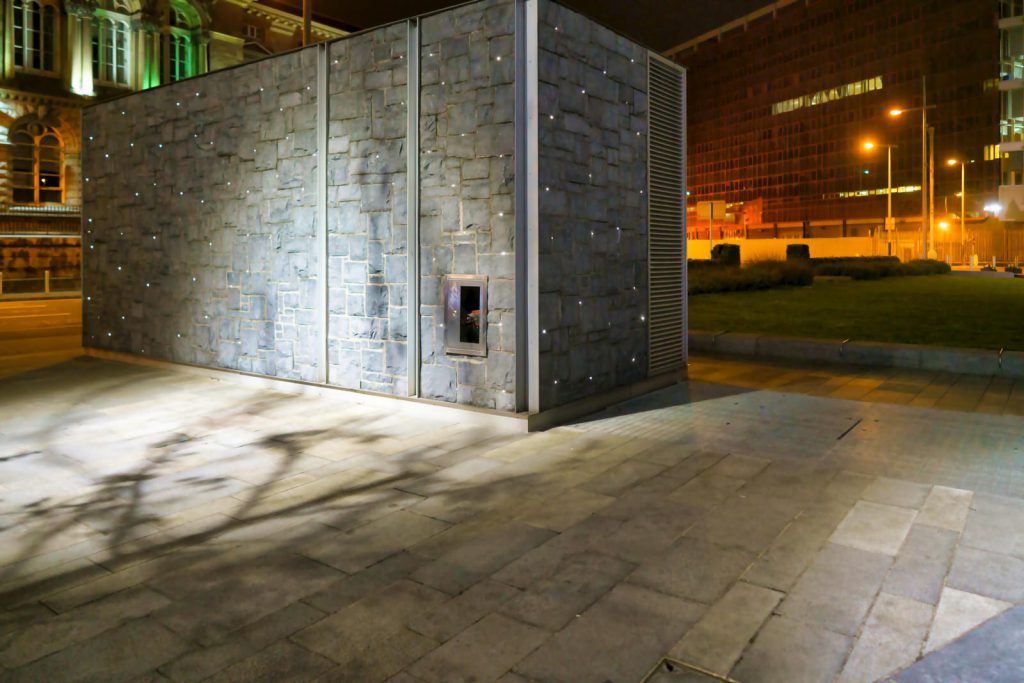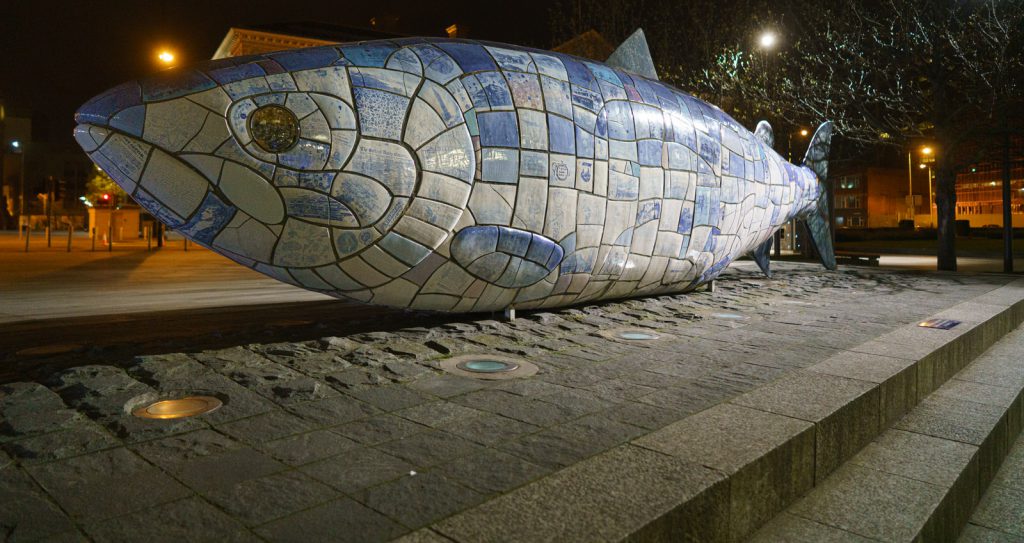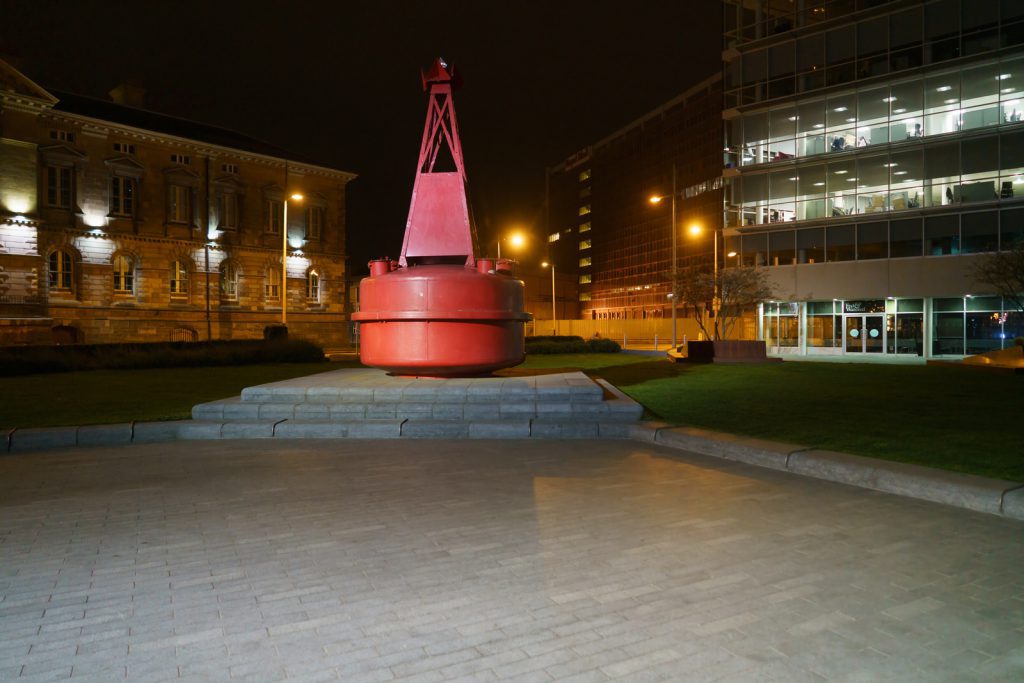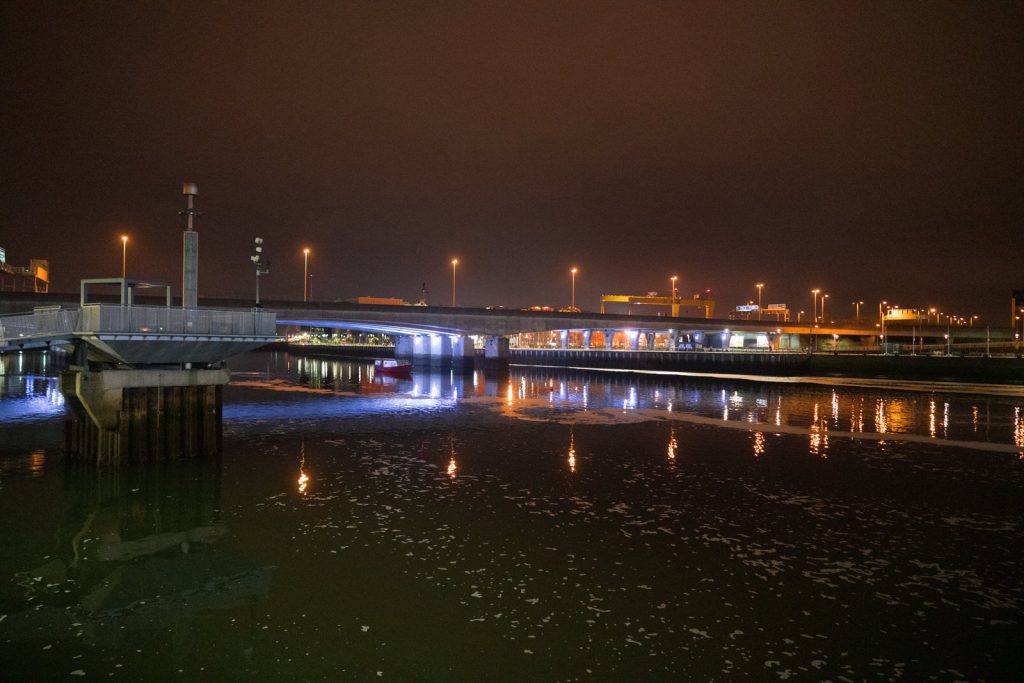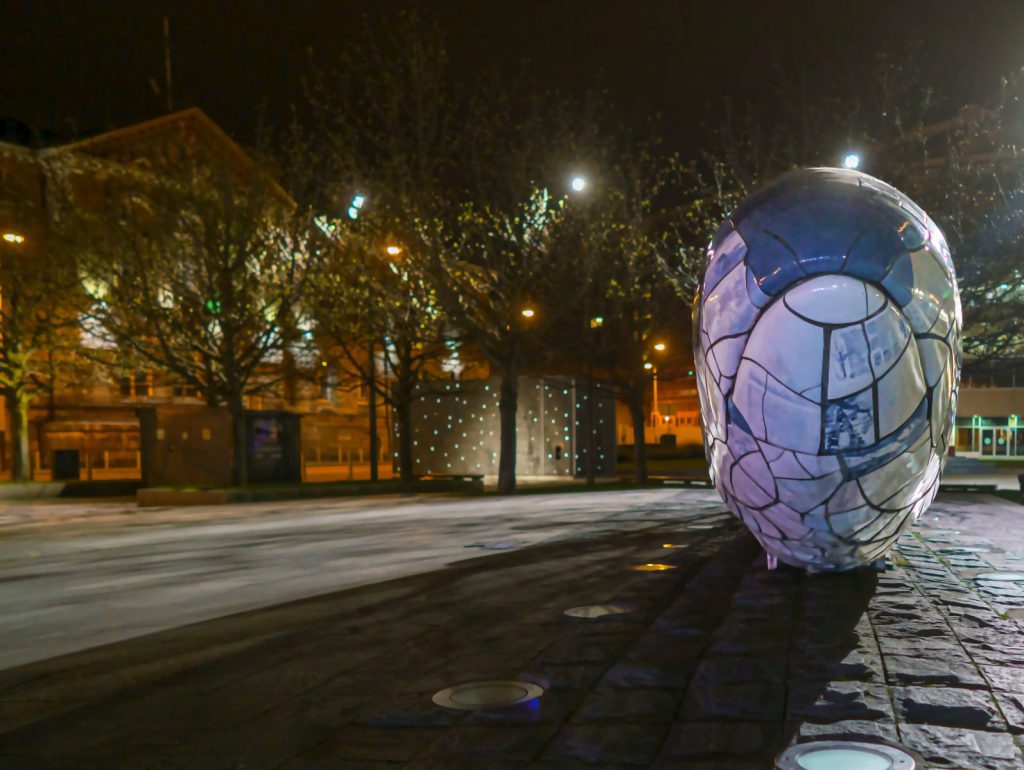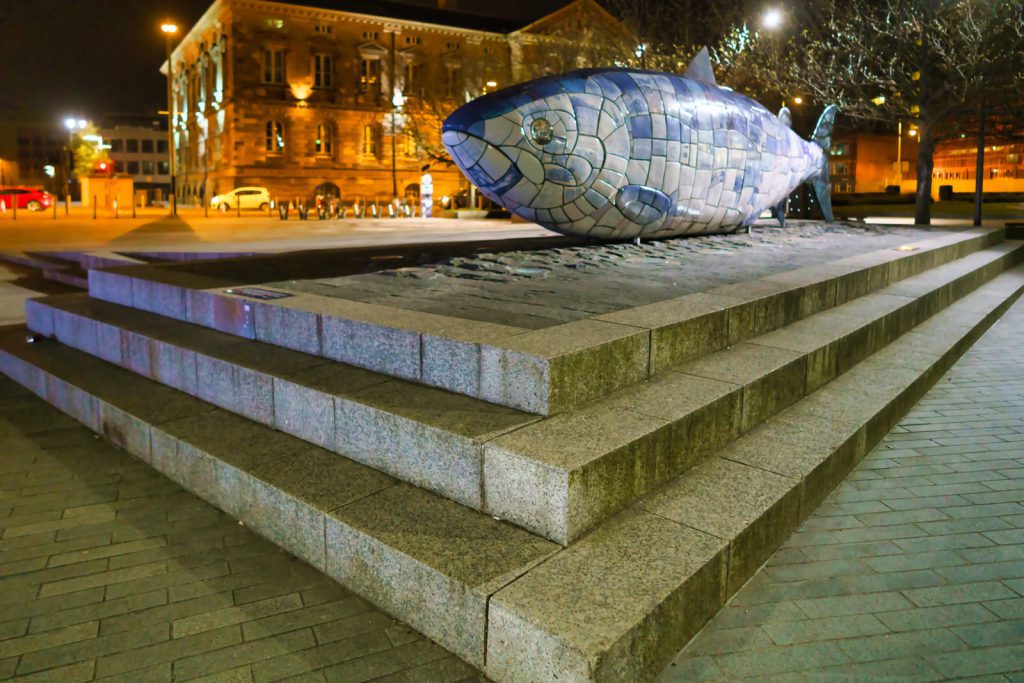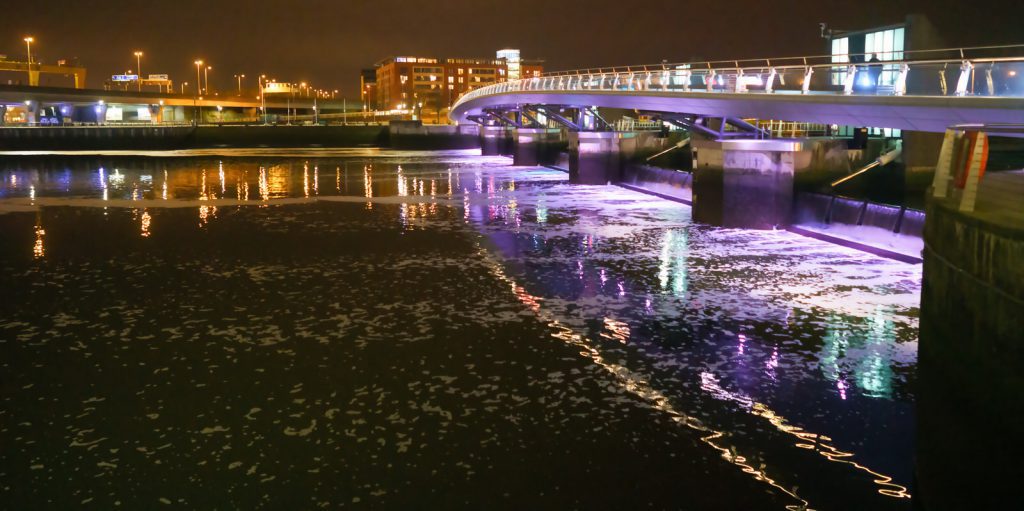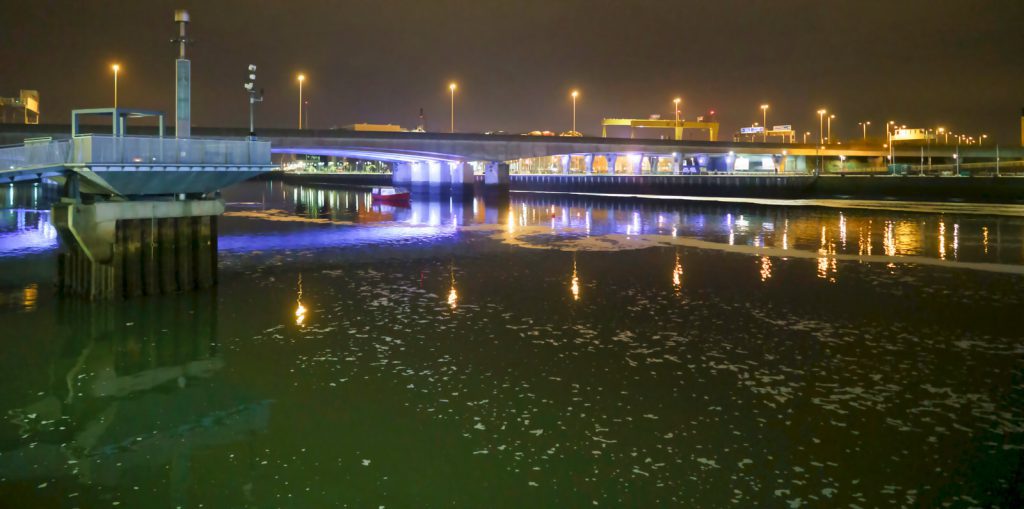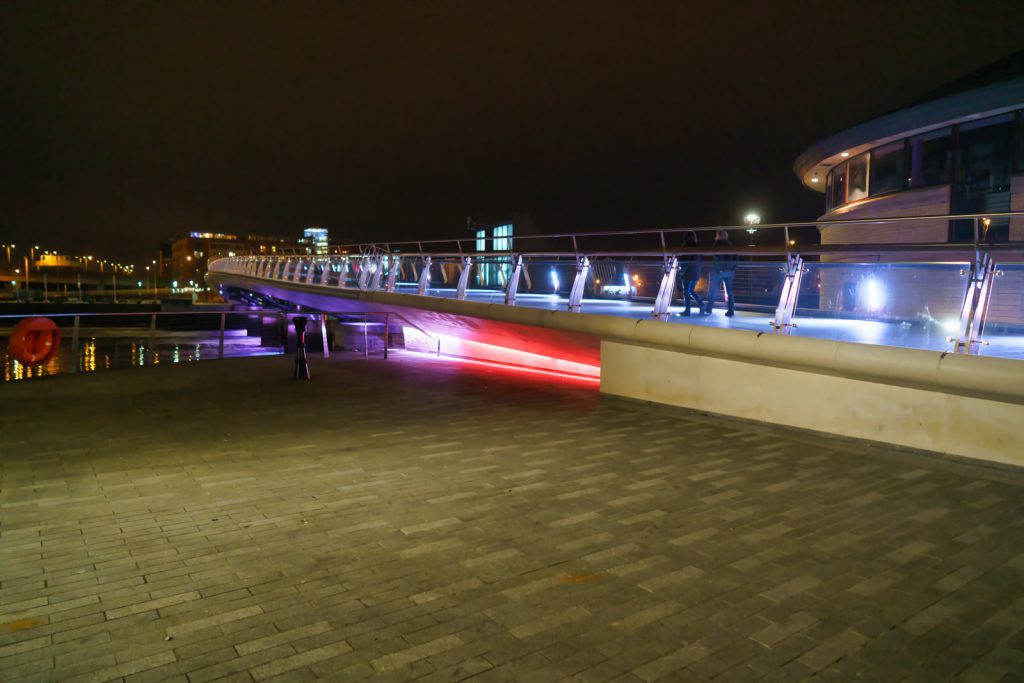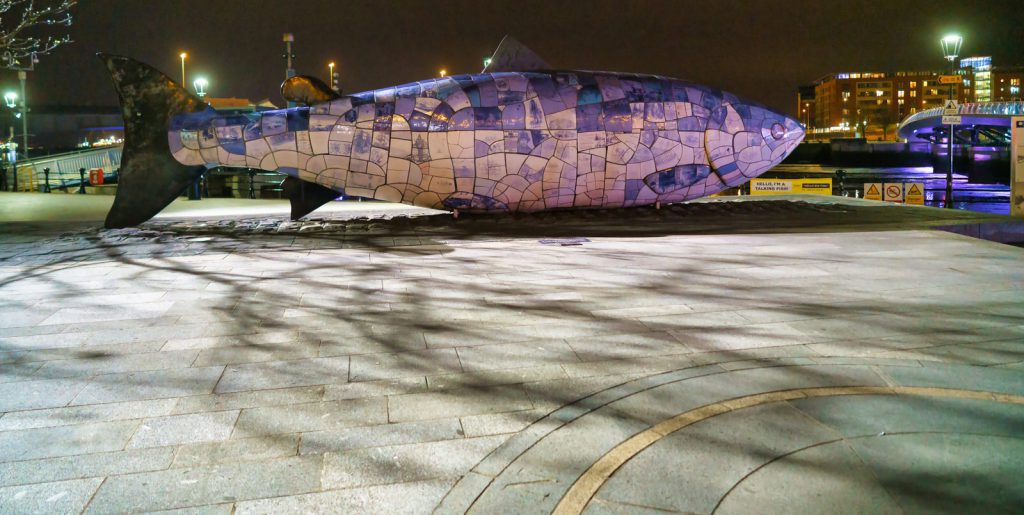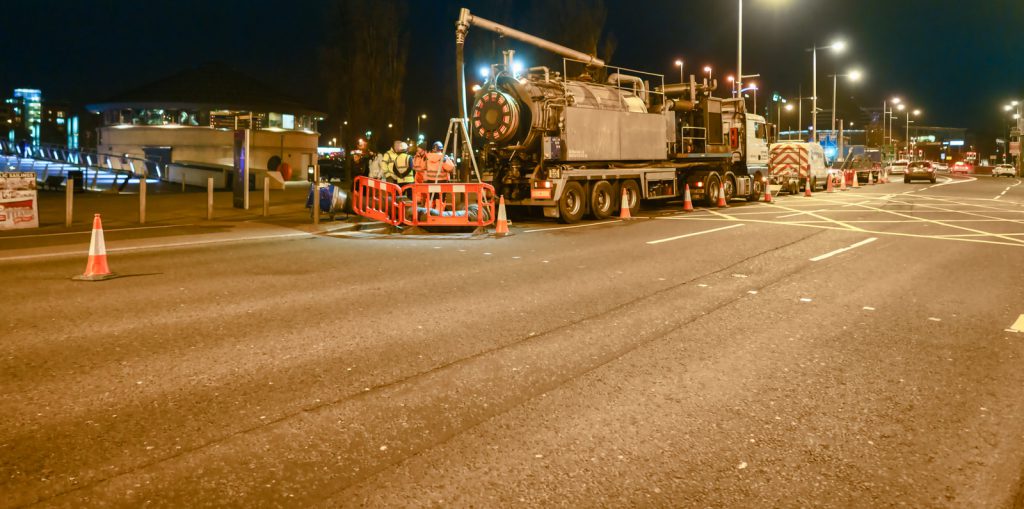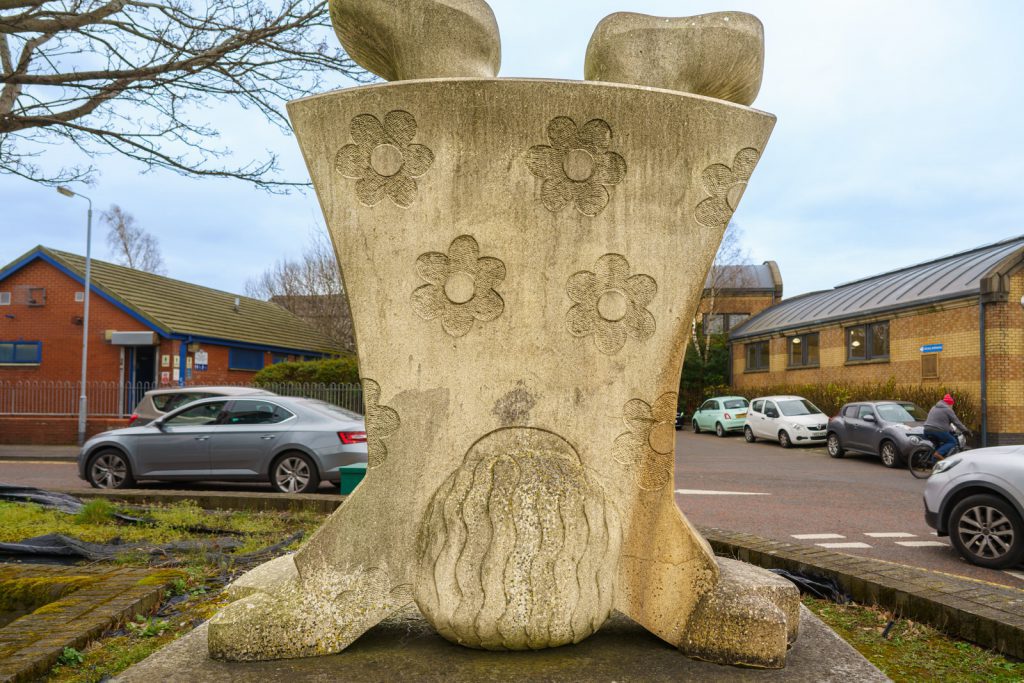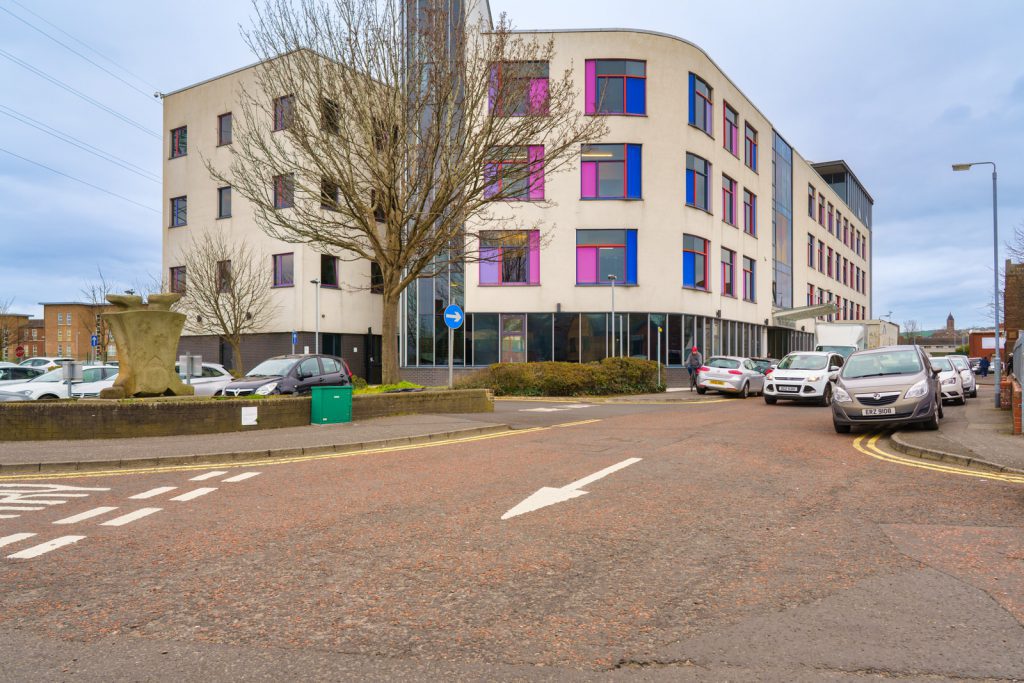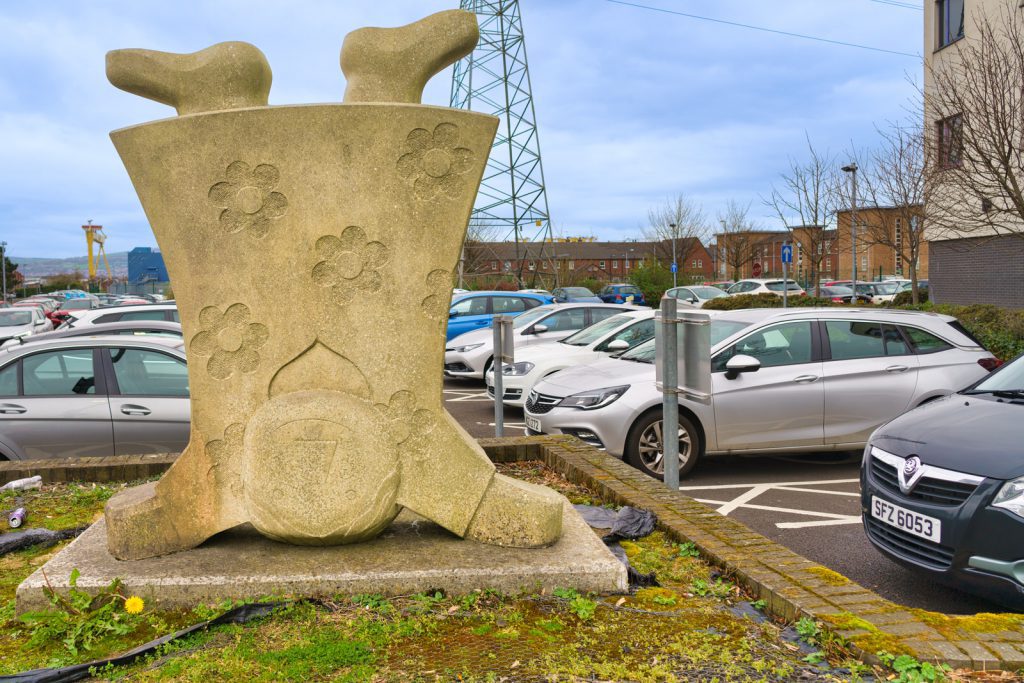AT NIGHT MARCH 2019
Unfortunately, these photographs contain a lot of noise.
The camera lens combination that I used in March 2019 was not really suitable for night photography so I delayed processing the images until now [8 September 2022].
The Lagan Weir, in Belfast, Northern Ireland, crosses the River Lagan between the Queen Elizabeth Bridge and the M3 cross-harbour bridge. Prior to the building of the weir, the river would be subject to tidal fluctuations, and low tide would expose mudflats, which were unsightly and emitted a strong odour, particularly in the summer months. Opened in 1994, the weir was seen by the Laganside Corporation as a catalyst for its redevelopment projects and was judged to be the “centrepiece” of that effort. The weir also incorporates a footbridge.
The five weir gates can each be operated independently. They are usually raised as the tide retreats in order to keep the river at a specific impoundment level. The gate operations are controlled by the River Manager. Without the weir, the river would be subject to tidal fluctuations. The tidal range is typically up to three metres between high and low tide, but the maximum tidal range can be as much as four metres. Prior to the building of the weir, low tide would expose mudflats, which were unsightly and emitted a strong odour, particularly in the summer months. On occasion, at high tide, the weir can operate as a barrage. If the river level is too high this can have such negative effects as causing erosion of the river banks, reduce air draft for vessels needing to pass under any of the river’s road bridges and in extreme cases, increase the risk of flooding to low areas.
A pedestrian footbridge was constructed over the weir and connects Donegall Quay with Queen’s Quay. The original bridge, which was narrow and required spiral access ramps at either end, was located above the weir gates and supported by the weir gatehouse structures. This was removed in 2014 to allow the construction a new structure, which provides access for both cyclists and pedestrians. The new bridge was erected by Graham Construction at a cost of £5m and is approximately 8 meters wide at its widest point.
